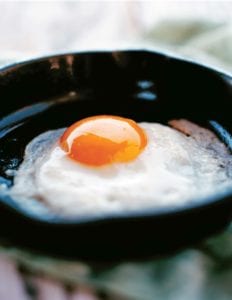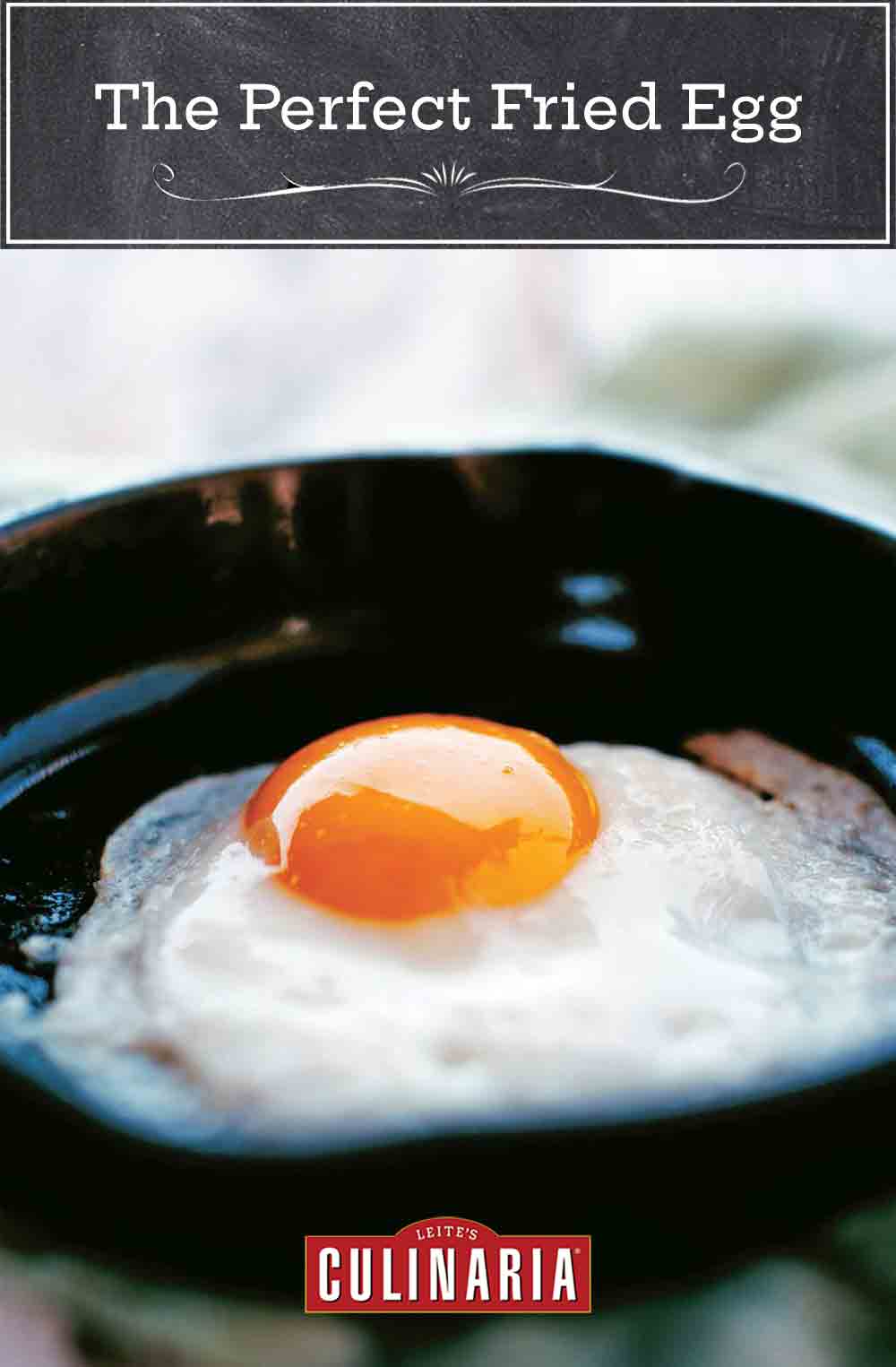
Jump To
How to make the perfect fried egg explains how long to cook an egg sunnyside up and at exactly what heat for a soft, runny yolk and tender whites that aren’t overcooked or crunchy at the edges. And the method used is sorta brilliant. In fact, it’s incredibly brilliant.–David Leite

The Perfect Egg
Ingredients
- 1/2 teaspoon unsalted butter or olive oil
- 1 large egg
- 1 teaspoon water
- Salt and freshly ground black pepper
Instructions
- Heat a small cast-iron or nonstick skillet over medium-high heat.
- Add the butter or oil and swirl it to coat the skillet. Immediately crack the egg into the skillet. Add the water to the pan, reduce the heat to medium-low, cover, and cook for 1 minute.
- Remove the egg from the pan immediately. Season to taste with salt and pepper and serve.

Nutrition
Nutrition information is automatically calculated, so should only be used as an approximation.











How simple and how good is this way to cook eggs! Every Sunday night I cook a rosti with par-boiled grated potatoes and leftovers and eggs on top, with a bit of salad on the side. The eggs crisp too much on the bottom while I wait for the tops to cook. It never occured to me to cook eggs this way until I read your email. Tried it, and the result was perfect. Thanks so much for your website and the time and dedication you put towards it and sharing so many great recipes. Recipes of yours have become family favourites. Now, how do I make the perfect poached egg?! Regards, Cheryl
It’s been a long time, but…
While I never tried it myself—never even poached an egg—I saw a cook on TV do the following and produce beautiful poached eggs. Into his pot with boiling water he threw a short dash of vinegar, then stir the water vigorously and as it was making a whirlpool, cracked an egg in, and soon removed it. Then stirred again, add another egg. The whirling water made the egg stay together round, somewhat resembling a boiled egg yet the white was filmy and not in a chunk. Perhaps the vinegar helped there.
Joe M, I’m with you on preferring frying to poaching when it comes to eggs. I have actually tried the method you just described, and while it didn’t work quite so magically in terms of appearance, I think perhaps I just need a little practice. Thank you for the reminder. Anyone else perfected this little poaching trick?
I’m sorry for your eggs. My memory failed me a bit, I just saw it but haven’t tried it myself. I found the recipe online and the process is a bit different. You stir the boiling water with a beater, then add all the eggs and turn down the heat to minimum.
Appreciate the clarification, Joe M. Will give it a whirl….
Yes, I don’t mess around with that vinegar or swirling nonsense, and I also don’t have to cook them one at a time. My trick is to take a very fine strainer and crack the egg into it, then run the lowest pressure water I can in the spray mode over the egg to wash away all of the loose white. I load them into small juice glasses so that I can lower them into the pot of almost boiling water slowly and slide them out. They may sink to the bottom and create a flat spot, but that’s not the worst thing if you’re going to be making eggs Benedict or something. After they start to firm up, I flip them over to make sure they’re even, drain them on a paper towel, and you’re ready to serve.
Great suggestion, Jeff!
Years ago I watched Julia Child use a very similar technique with one egg at a time. Keep cooked eggs warm in slightly heated water.
Don’t stop to take a phone call.
Thanks, Stephen!
This is true. I do this with my one egg-size Le Crueset pan (orange exterior, white ceramic interior.) I learned this by error one day, while cooking something else, in a “disaster” kitchen (you know the kind). I had nowhere else to park a lid from the soup pot while I stirred. On my egg the lid went. It had some moisture from the soup, and started sizzling, so I turned its heat off but left it while I stirred. Well, what’s the saying? The mother of invention. Something. I used to think I was going to have to poach ONE egg. Nope!
This is exactly how my grandmother taught me to make eggs and it does indeed make a perfectly cooked egg. It’s how she taught me to count by counting out loud, together, the 60 seconds in a minute. When I was older, we worked our way up to counting out the seconds needed for a four-minute soft-boiled egg.